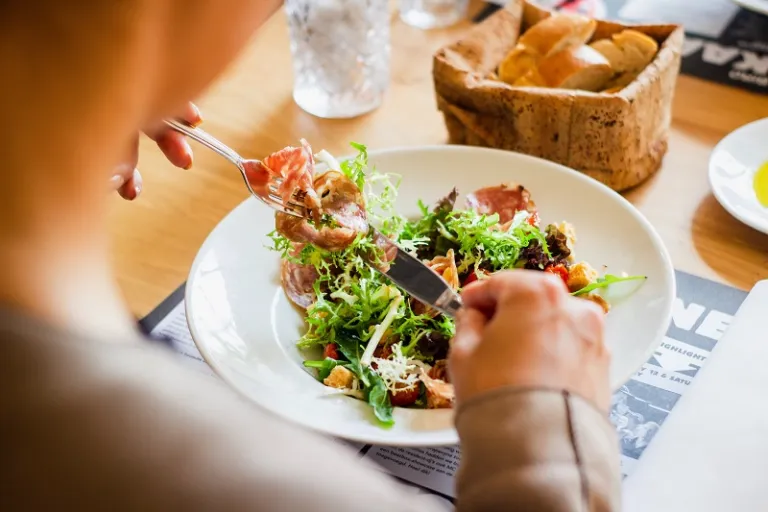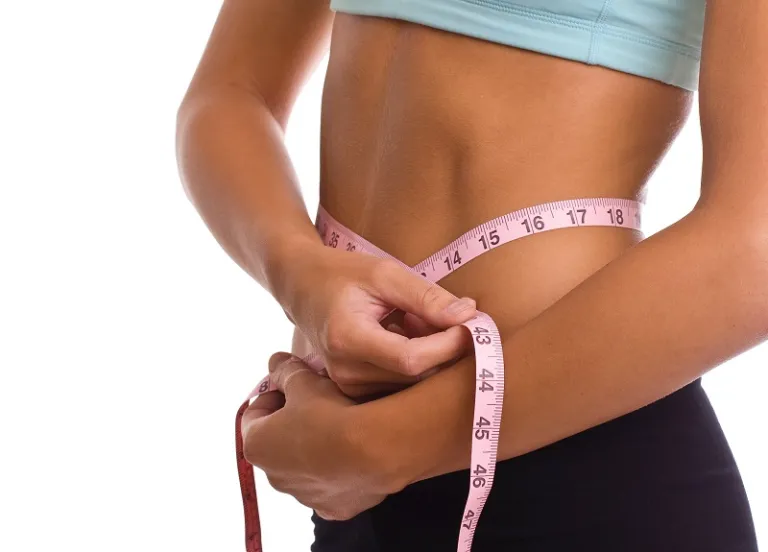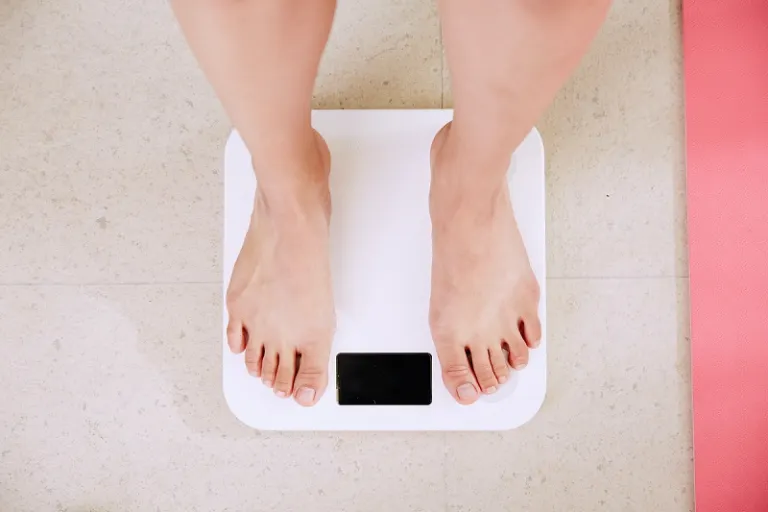Sometimes we need a little TLC.
Intermittent Fasting Basics: Fun Facts & How to Make It Work

Amid the flurry of fitness buzz-terms and fads, I have to admit, I initially wrote off as another wellness trend. In fact, low carb and keto authority Diet Doctor confirms there has been a 10,000% increase in -related searches online since its emergence in 2010.
Let’s cut to the chase: Intermittent fasting is not just a fad. I’m here to tell you that works, but only if you do it right. So without further ado, here are the whats, hows, and whens of making a habit you can stick to.
Also read: Completed 30 Days of Yoga During Quarantine — Here’s How It Changed Me
What’s ?

A lot of people mistake as a form of ing; it’s not. Diets, simply put, require you to stay away from or stick to certain types of food. For example, no/low carb s like the Atkins tells you to lay off grains and sugar. Say sayonara to rice, noodles, boba, bread — everything that Asians love. A vegetarian limits you to plant-based goodies, while the keto encourages you to load up on fat. Intermittent fasting won’t do any of that.
Rather than restrict what you can eat, it only tells you when you can eat. In that sense, isn’t a at all. It’s more of an eating routine or schedule that you weave into your daily grind.
And as it turns out, fasting lets your body consume stored energy (in the form of fat). The more stored energy you consume during your fasted state, the more fat you burn. The more fat your burn, the leaner you can be; here lies ’s claim to fame. Instead of solely relying on your consumption of new calories, you train your body to use up what it has already stored for previous meals and binges.
The cycle helps reboot your body and allows it to source energy more efficiently. Think of it as a way of accessing your body’s power bank.
Our forebears did it, too, so it’s not new

Nephrologist and trusted Low Carb High Fat (LCHF) expert Dr. Jason Fung advocates to patients across the globe. In his practise, Fung uses food hand in hand with medicine. He believes that food intake certainly affects our overall health; and when we eat is just as important as what we chow down on.
This is why is something he frequently prescribes to patients in dire need of ary management. According to Fung, fasting is simply the “controlled voluntary absence of food”, and humans have been doing it ever since we learned how to hunt. That makes complete sense, as our forebears couldn’t have hunted daily. Take into consideration the success rate of each hunt; early Homo sapiens didn’t always come home with fresh meat for everyone. So what do you think they did when they couldn’t hunt or forage? They fasted, of course.
Fasting isn’t a new concept for several cultures and faiths, either. Christians regularly undergo prayer and fasting, plus there’s lent. Muslims have Ramadan. Read the histories of different peoples and civilisations, and you’ll surely come across some form of fasting and abstinence.
I want to try — when do I eat?

So yes, fasting has been around for ages. But it’s also true that the term was only coined in the last decade. Of course, with new terminologies come new guidelines. So when does the eating happen during ? How long do you have to be in a fasted state?
There are many methods of , but for this sake of keeping things simple and beginner-friendly, we’ll start with the most popular (and doable) fasting method. It’s called the 16/8 Method.
16/8 Method: basics & how-tos
The 16/8 Method is pretty straightforward; for most newbies, it’s also quite sustainable. Chances are you’ve done it already without meaning to. So what’s the concept? In a day’s 24 hours, spend 16 hours without food, and limit eating time to 8 hours. That’s it.
You know you’ve already done this if, say, you don’t eat anything after 6pm (from the equally popular nothing-after-six ) and you only eat breakfast the next day at around 10am. Voilà — successful 16/8 fasting!
I often find myself unknowingly observing the 16/8 method on weekdays, when the first meal I take is lunch. Brunch at home is between 12 to 1pm, so this means I should stop eating at around 8pm to fast effectively. During the days that I skip breakfast, I only drink wheatgrass and water, which works for my sensitive, acid attack-prone stomach. Intermittent fasting allows you to take water, black coffee, and unsweetened tea during fasting hours. Like I said, the 16/8 method is very doable — even for snackers like me.
Other options

When you’re ready to level up, you can turn to more advanced methods like the 5:2 . This involves eating as you normally would for five days of the week and restricting yourself to an all-time low of 500-600 calories per day for two non-consecutive days. There’s also the Eat-Stop-Eat Method, which will require you to fast for a day or two every week, 24 hours at a time. Some extreme methods include fasting for 23 hours a day and just eating 1 meal within your one-hour window.
Keep in mind that the capacity to fast differs per person, and you should always listen to your body. If something doesn’t feel right, stop it. That’s the beauty of ; it’s easily adjusted to suit your needs and preferences as well. For as long as you observe the idea of keeping yourself in a fasted state for X hours, then you should be well on your way to successful .
What are the benefits of ?

Consider this: Humans aren’t meant to be eating as much as we’re used to. Three big meals a day plus sugary snacks in between and a sedentary lifestyle equals caloric intake that isn’t put to use. That said, there are many benefits waiting at the end of each fasting period. Here are a few.
1. Weight and fat loss
The most obvious benefit is weight loss, which results from the body’s burning of stored energy or fat. This side effect is what makes so popular, too.
You see, our bodies turn carbs into sugar for energy. Once we exceed the limit we use on a regular basis for daily, usually non-physically strenuous tasks, our body stores this energy as fat. This fat, in turn, gets distributed in different parts of our bodies. Now it’s easier to understand that a higher body fat percentage may mean two things: 1) You consume a surplus of “go” food and 2) You don’t do much to allow your body to burn these stored pockets of energy. Most of the time for office-goers who sit all day, it’s a combination of the two.
That said, opting for doesn’t mean you get to binge during that eight-hour period of eating. You won’t see results if you fast but you don’t cut down on sweets. Intermittent fasting will work better if done alongside smarter eating and a more active lifestyle, too. Tl;dr: When fasting, still go easy on the carbs; eat only what you’ll use as energy for the day. The more you move, the more sustenance you can consume.
Also read: Building a Home Gym? Here’s Where to Get Your Fitness Equipment
2. Convenience, ease, savings
Another benefit of is how you won’t have to go to extremes just to get it done. It doesn’t take much to incorporate it into your daily routine. All you have to do is note when you can eat and when you should stop. There are no restrictions, either; we told you to cut down on carbs, but it doesn’t mean you can’t have them anymore. That makes one of the more forgiving food management options! It gives you the freedom to still treat yourself when you choose to or when you deserve it.
Remember, everything in moderation. The concept of fasting is hinged on restoring balance in your life. For every negative, there’s a positive. For every hour you spend eating, there should be fasting. The best part? Intermittent fasting doesn’t involve money. It works even for the most penny-pinching health freaks. No need to count on your wallet for supplements or speciality ingredients. What you’re banking on here are pure discipline and sheer willpower.
Also read: ‘Tita Gadgets’ Make Life Easier — This List of 20 Must-Have Items is Solid Proof
3. Lower blood sugar levels, better heart & brain health
Since keeping yourself in a fasted state “forces” your body to use stored energy through fat, it also means reducing insulin resistance. When you eat, you produce more insulin, which helps you metabolise newly consumed carbohydrates. This triggers the creation of fat in the body and allows it to use glucose as energy. Simply put, when you fast, you decrease insulin levels. Decreased insulin levels will signal your body to burn fat! With no freshly metabolised glucose in your bloodstream, your body will effectively use stored fat for energy instead. Cool right?
What follows is improved health for your heart and brain. Lower sugar levels also lead to less inflammation, and decreased body fat lessens the risk of developing heart disease by ridding your system of toxins and bad cholesterol. Fasting also triggers the body’s “repair mode”, so this allows you to create new nerve cells for better focus and cognitive response.
How do I know that works for me?

There are many more benefits you get from , most of which are still being studied to this day. The best way of knowing if it works for you is to try it out, as long as you’re healthy enough to.
If you’re underweight or you suffer from a digestive disease, better consult your doctor first before committing to this new lifestyle. But hey, if it has worked for people all these years, then there are more chances that it will for you, too.
Have you tried ? How was it? Let us know in the comments section or tag us in your fitness journey posts on Instagram @tripzillaph!
Published at
About Author
Alyosha Robillos
Subscribe our Newsletter
Get our weekly tips and travel news!
Recommended Articles
10 Spa & Massage Places in Manila to Destress I Completed 30 Days of Yoga During Quarantine — Here’s How It Changed Me Have you dealt with anxiety during this pandemic? Here’s how I faced it.
Abaca Face Masks: Everything You Need to Know Now is the best time to support local!
15 Best Local Activewear Brands for Workout and Athleisure Looks Time to spruce up your workout wardrobe!
17 Emotional Stages of Being Addicted to Plants During the Pandemic Why can’t I stop buying plants?!
Latest Articles
Myanmar Earthquake: Strong Tremors Cause Building Collapse in Bangkok A powerful earthquake in Myanmar shakes Southeast Asia!
Tuasan Falls: A Refreshing Escape in Camiguin Easy-to-reach waterfall with crystal-clear waters in Camiguin
Best Places to Celebrate Songkran Festival 2025 in Thailand Let’s get soaked!
4 Best Tanay River and Hiking Trails: Ultimate Outdoor Adventure Escape the city and explore Tanay’s stunning rivers!
Meat-Free Filipino Dishes to Try This Holy Week Discover must-try Filipino dishes perfect for a meat-free Holy Week.

